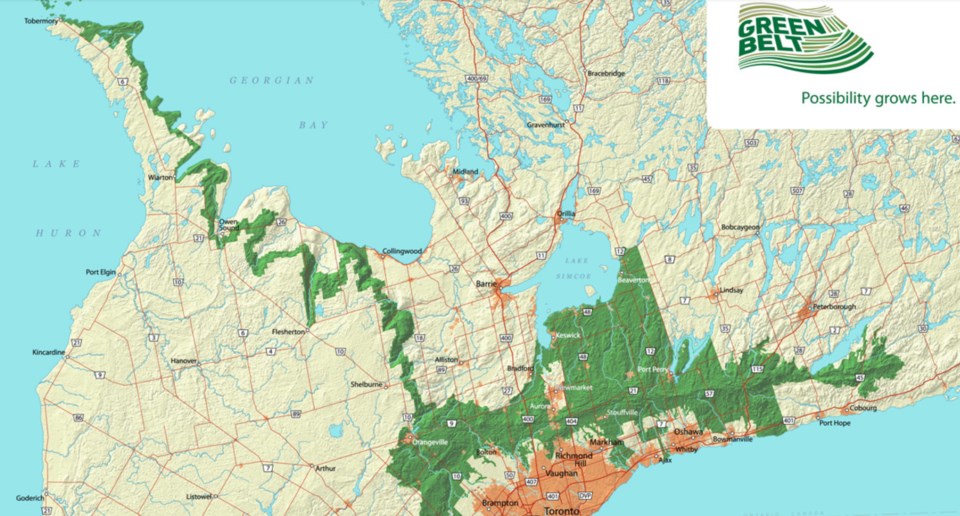A recent funding announcement from the province is good news for the Greenbelt, according to local groups.
The Greenbelt Foundation has received renewed funding of $12 million over three years. The money “will allow the foundation to continue conducting applied research and providing strategic grants that protect and enhance Ontario’s Greenbelt and improve understanding of the economic, environmental, and social benefits it provides,” the foundation stated in a news release.
“It’s reassuring that the province is continuing to invest in the Greenbelt Foundation because it really drives research and supports groups like ours that help inform decision makers,” said Claire Malcolmson, executive director of the Rescue Lake Simcoe Coalition.
That organization has received grants from the Greenbelt Foundation in the past. Some of the funding allowed the coalition to work with the University of Guelph to create an environmental policy mapping research project “to identify how well-protected natural features in Simcoe County and the Lake Simcoe Watershed are.”
“This research was used in the recommendations ... which are being used, we hope, to inform the natural heritage policies in the Lake Simcoe Protection Plan review process,” Malcolmson explained.
Another round of funding aided the coalition with its report on traditional ecological knowledge, she said, “looking at the landscape for social, cultural and spiritual value, and historic land usage.”
Malcolmson has personally benefited from Greenbelt Foundation funding in the past. She was a board member with the coalition when some of the funding went toward executive director training.
The province is planning to expand the Greenbelt, but not into Simcoe County. The only part of the county that is currently part of the Greenbelt is the southeast area of Innisfil, while almost all of Lake Simcoe’s eastern shore is included.
Simcoe County remains “a major target for new development,” Malcolmson said, adding it’s “unfortunate” more of the county isn’t included.
The Simcoe County Greenbelt Coalition also welcomed the funding announcement.
While that group isn’t directly tied to the Greenbelt Foundation, it has shared interests in the protection of the Greenbelt.
“It’s great news,” said executive director Margaret Prophet. “It enables the foundation to help farmers’ markets, to help encourage local agriculture and to help local organizations preserve and protect greenspace.”
It’s especially important for those groups to have access to funding and support during the COVID-19 pandemic, she added.
The challenges faced at a time like this aren’t lost on the Greenbelt Foundation, said its CEO, Edward McDonnell.
Prior to the pandemic, the foundation had created a multi-year tourism strategy. It has been “complicated by COVID,” he said.
The focus now is “how to encourage, when the time’s appropriate … visiting the Greenbelt.”
“There has been a spike in demand for outdoor recreation, and we’re not expecting that that’s going to go away anytime soon,” McDonnell said. “We can only imagine what the pent-up demand will be for people to get back out.”
The province has funded the foundation since the establishment of the Greenbelt in 2005. While the health of the environment is a major focus for the organization, it isn’t the only one.
In addition to providing $3.2 billion worth of ecosystem services annually, such as flood prevention and water filtration, the Greenbelt also supports 177,700 full-time jobs in the tourism, recreation and agriculture sectors and contributes $9.6 billion to the province’s gross domestic product.
More information about the Greenbelt Foundation can be found on its website.
